The world is full of wonders, and our own nation is home to many of them — both crafted or manufactured by people and purely natural. As much as we might look in awe at great art, remarkable architecture, beautifully chaotic city streets, and the like, however, it’s the phenomena that occur without human intervention that tend to amaze and delight us the most.
What nature can conjure up with fire, water, ice, and light, among other elements, is incredible and consistently surprising. Unearthly colors, breathtaking vistas, tiny creatures who illuminate their surroundings or thrill us with their movements through the skies or across the sand…. You can find all these things and more in various parts of the United States.
It’s axiomatic, of course, that we tend to travel to see the sites while ignoring what’s in our own backyard. (How many New Yorkers have looked out on the majesty of Niagara Falls? How many Californians have actually gone to see the Redwoods?) There’s such a wealth of spectacular things to see around the country, though, that we probably ought to make an effort to appreciate at least some of them in person.
To assemble a list of 20 of America’s most amazing natural wonders, 24/7 Tempo reviewed “Top Destinations to See Natural Phenomena in U.S.,” a guide published by the German-based rental car company SIXT, which describes itself as “a leading international provider of high-quality mobility services.”
The company asked its travel experts to identify these phenomena and rank them based on rarity, affordability, Instagrammability, and popularity. The results cover 13 states, from Maine to California, Alaska to Texas. Some of them must be visited in certain seasons, while others will reveal themselves all year long. Most have likely been around for as long as the world has existed, though some have doubtless been affected by climate change and the incursions of humanity. For the latter reason, some are now under the protection of the National Park Service or other agencies — but that just often makes them even easier to access and enjoy. (Whether you look for them here or abroad, these are 50 natural wonders everyone should see at least once.)
Scroll down for a ranking of America’s most amazing natural wonders.
Ice volcano
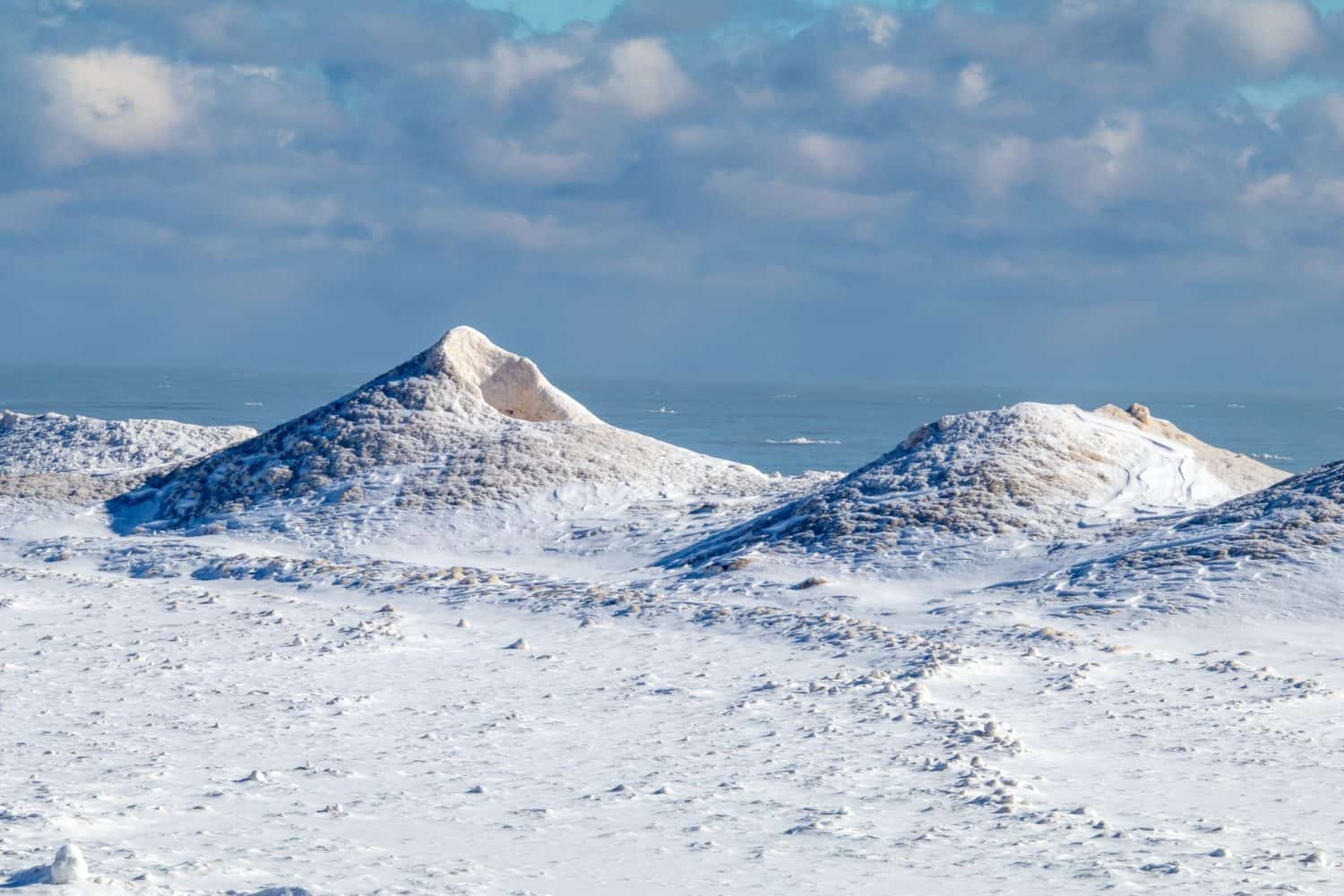
- Location: Letchworth State Park, Castile, NY
- Timing: December – February
Ice volcanoes are volcano-shaped cones formed of water and soupy ice that shoot up from a lake and freeze into shape. They sometimes appear in New York State’s Finger Lakes region, and this year, a spectacular one formed at this state park.
Ice waterfall
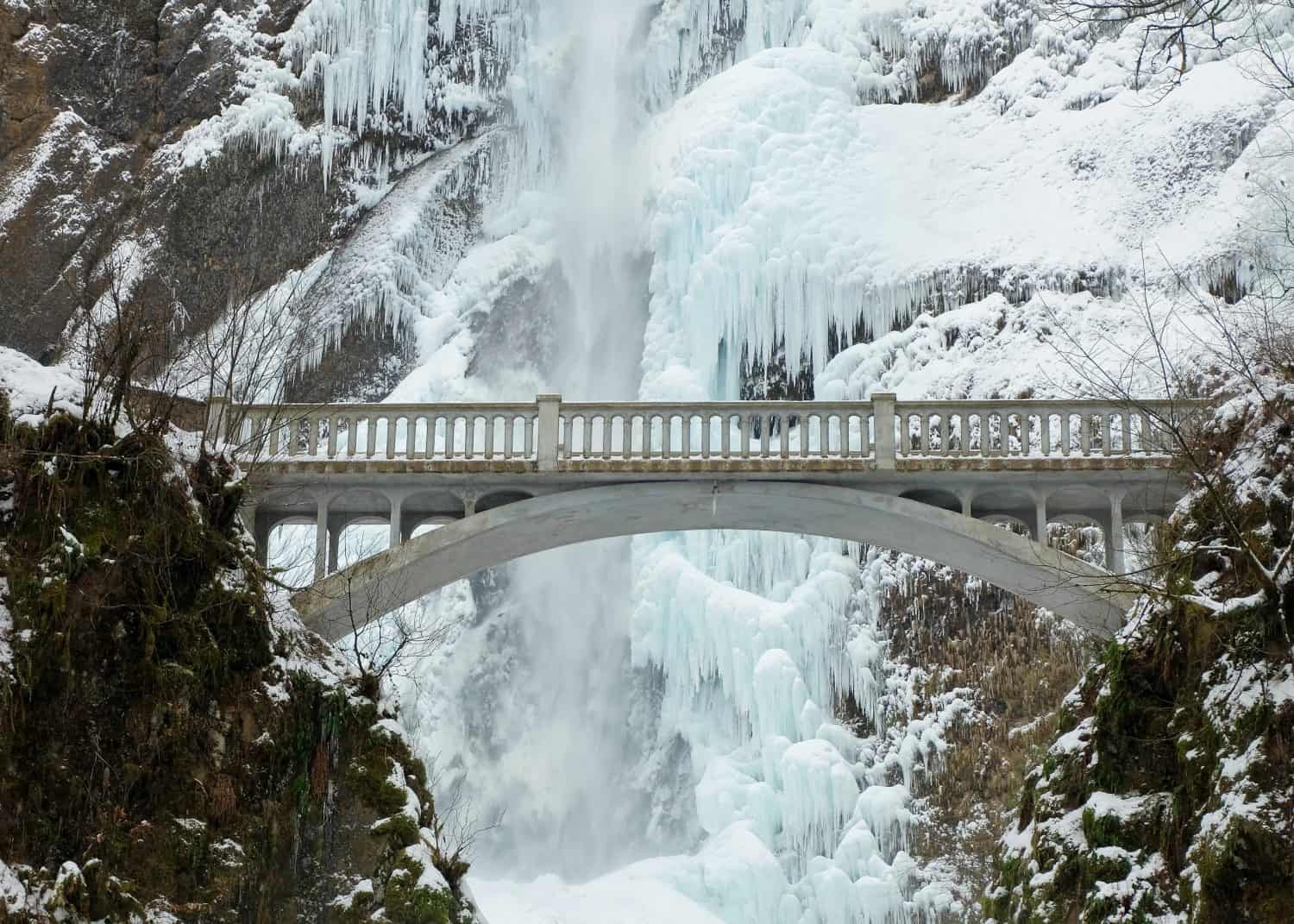
- Location: Multnomah Falls, OR
- Timing: Late winter months
On occasion, in the coldest parts of winter, the magnificent Multnomah Falls in the Columbia River Gorge freezes in place, producing a high, seemingly cascading (but actually frozen-in-place) sheet of ice.
Sailing stones

- Location: Racetrack Playa, Death Valley National Park, Death Valley, CA
- Timing: All year round
Racetrack Playa, a dry lake bed, is famous for its so-called sailing stones — large rocks that move, seemingly on their own, leaving tracks behind. Strangely, no one has ever seen them change position, but it has been clearly documented that they do. Many theories have been proposed for the phenomenon, but in fact they seem to travel on thin sheets of ice blown by the wind. Though they change position only in cold weather, their paths can be seen at any time of year.
Light pillars
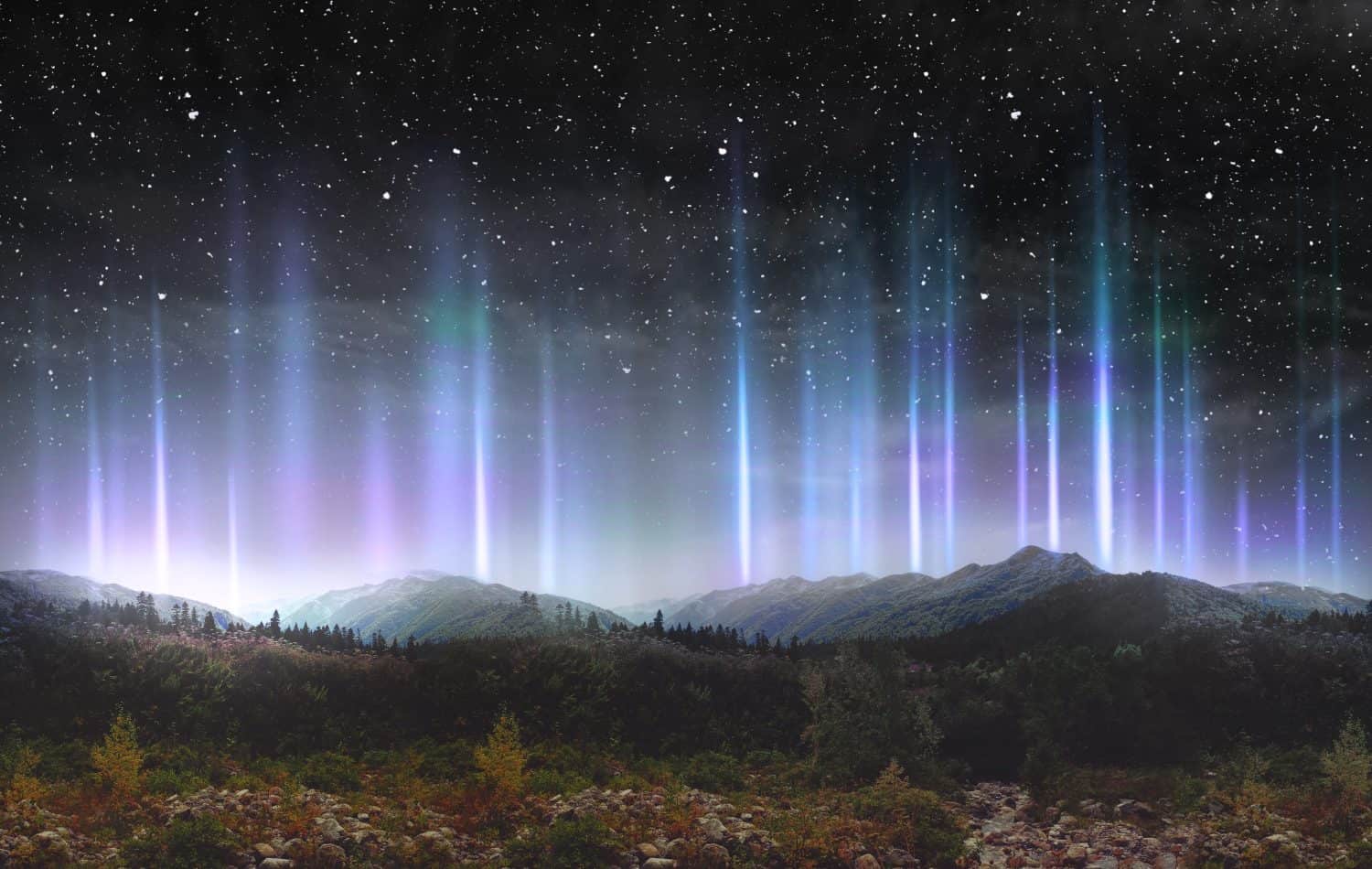
- Location: Hudson, WI
- Timing: Any time on a frigid winter night
Mysterious shafts of multicolored light sometimes brighten the sky in Hudson, WI, and other portions of the Midwest. Some seem anchored to the ground, while others appear to float above it. Small ice crystals suspended in the air, illuminated by moonlight, streetlights, and other sources create these magnificent pillars.
Glow worm caves
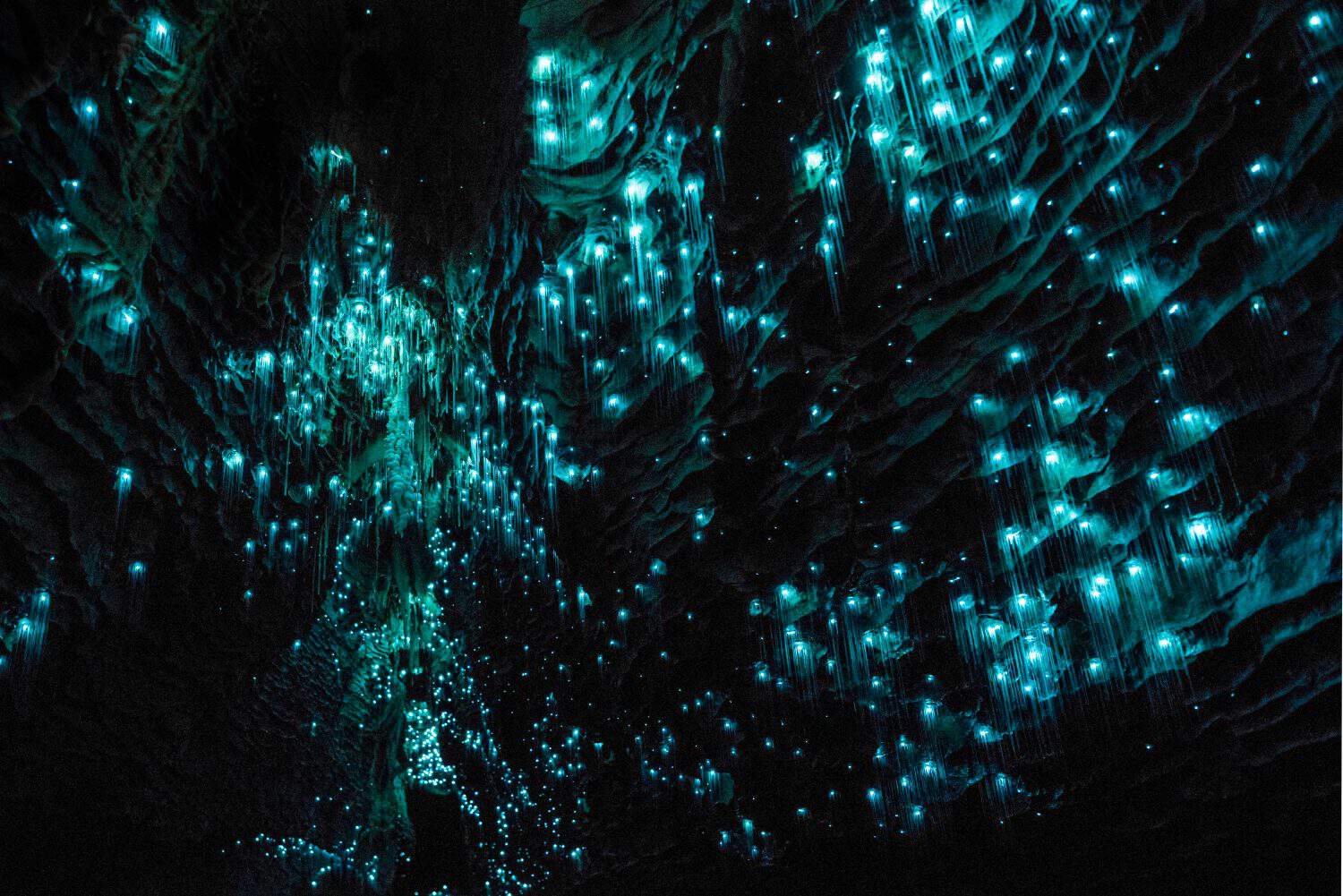
- Location: Pickett CCC Memorial State Park, TN
- Timing: May and June
While there are similar caves in other parts of the world (as far away as Australia), our country’s most famous example of this natural wonder is Hazard Cave, in northeastern Tennessee. The walls of the cave are lined with “glow worms” — which aren’t really worms, but the larvae of a kind of gnat known scientifically as Ofelia fultoni. The larvae emit a blue light that shines on cave walls to eerie effect.
Moonbows
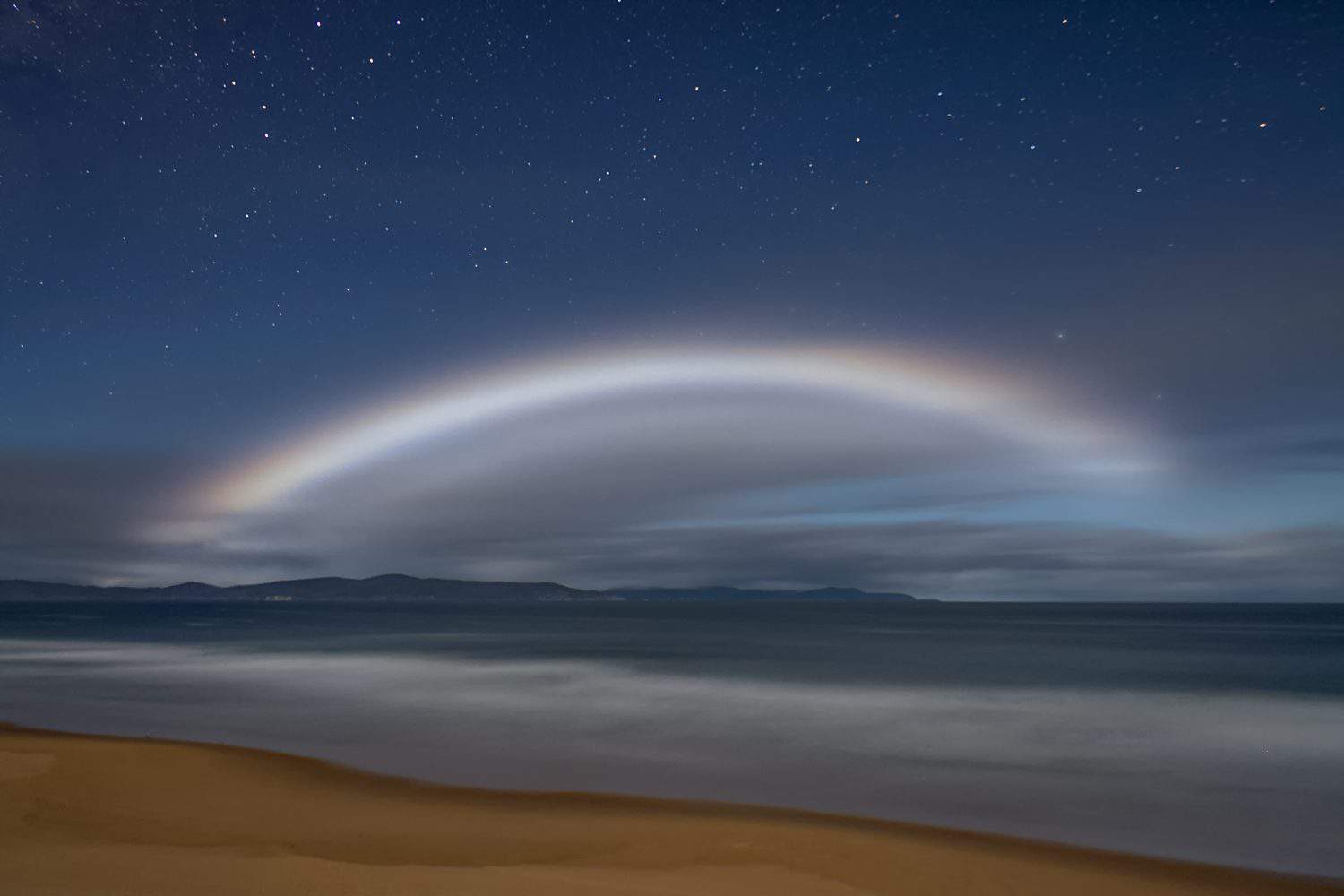
- Location: Niagara Falls, NY
- Timing: The night of the full moon or within two or three days before or after
A moonbow is simply a rainbow produced by the light of the moon rather than that of the sun. Moonbows appear in the rain, but also in mists of water suspended in the atmosphere — like those that rise from thundering Niagara Falls.
Monarch butterfly migration
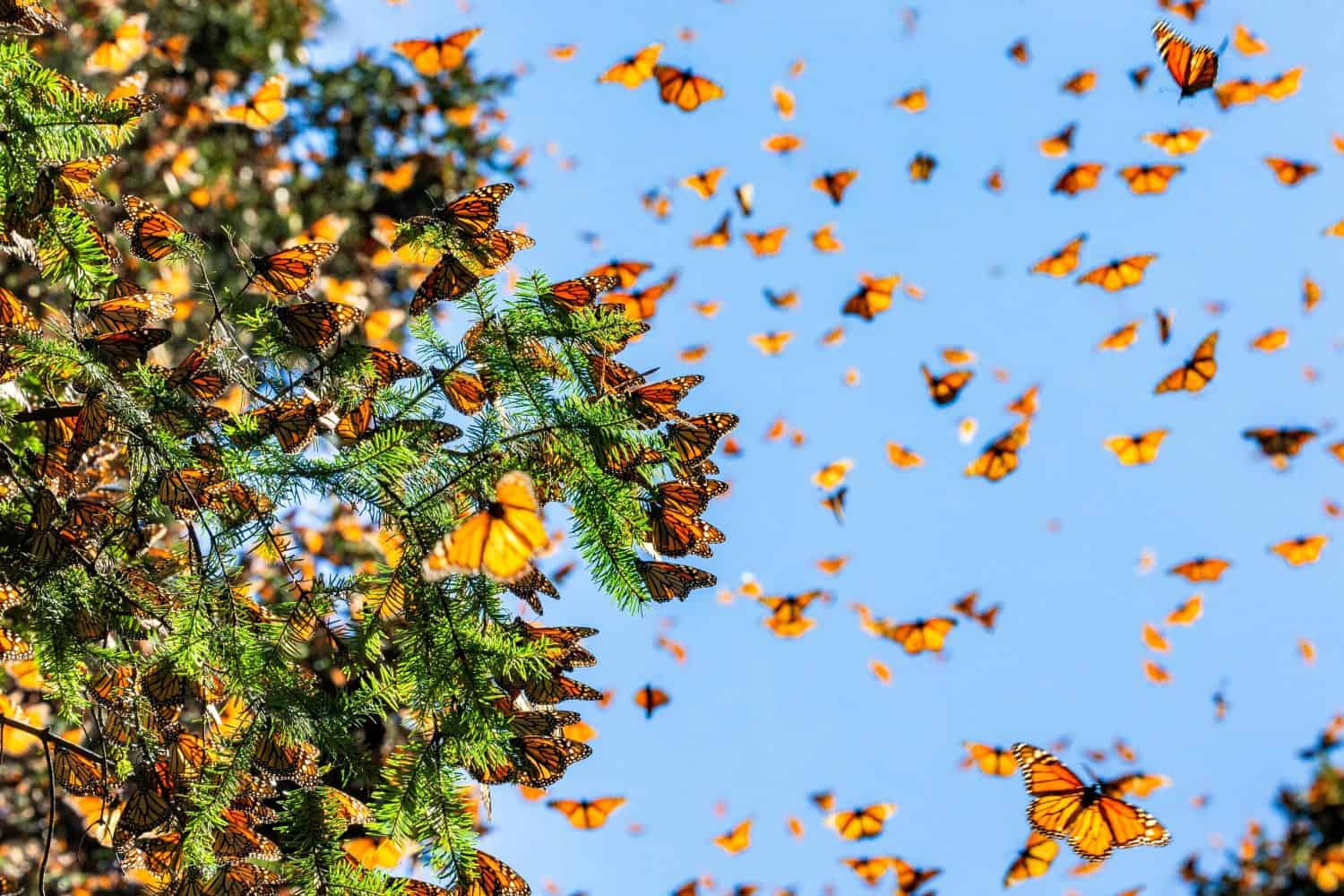
- Location: Monarch Butterfly Grove, Pismo State Beach, CA
- Timing: Mid-October through mid-February
More than 10,000 gloriously patterned orange-black-and-white Monarch butterflies congregate on towering eucalyptus trees, all but covering their trunks, in this central California beach town every year as a way station in their annual migration to warmer climes. Sometimes, in fact, there are a lot more than 10,000: Some 24,128 were counted in the 2022-2023 season.
Nacreous clouds

- Location: Fairbanks, AK
- Timing: Winter
Nacre is the iridescent substance also known as mother-of-pearl. Nacreous clouds (technically known as ice polar stratospheric clouds), typically appearing just after the sun sets, mimic the subtle pastel colors of the iridescence. They occur when the stratosphere’s temperature descends below the frost point (about -120ºF) when light waves are diffracted through ice crystals in the stratospheric level of the atmosphere.
Ice caves
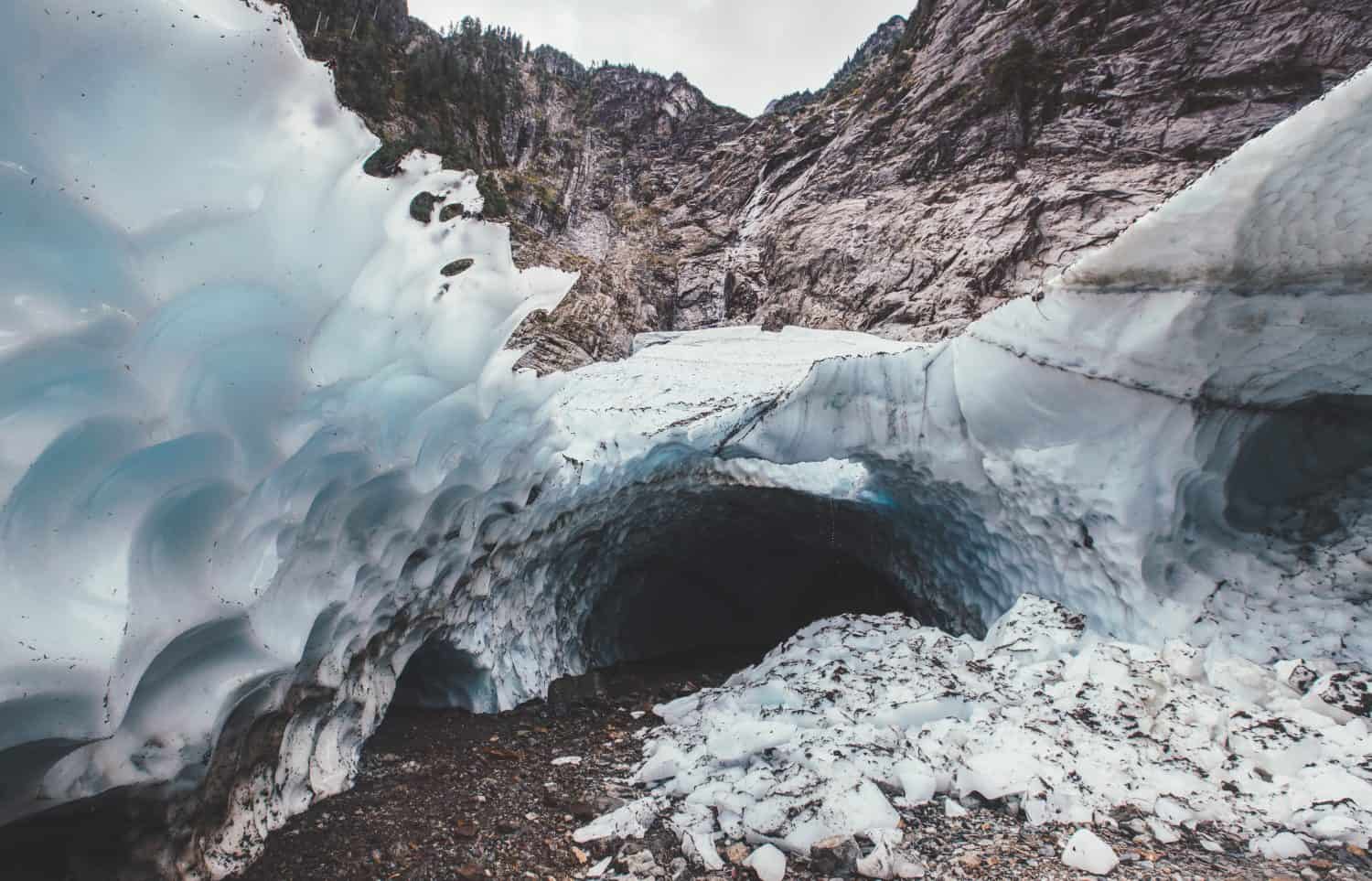
- Location: Big Four Ice Caves, WA
- Timing: May – September
Not to be confused with glacier caves, which are created by running water from glacial melt, or with caves cold enough to be lined year-round with ice, these caves are, as the Washington Trails Association explains, “[f]ormed by melting snow, waterfalls from the above cliff and wind, [and] are really snow caves under an avalanche chute.” It is extremely dangerous to climb on top of them or enter them, but they are a marvel to behold from a safe distance.
Old Sow Whirlpool

- Location: Eastport, ME
- Timing: Summer or fall
By far the largest tidal whirlpool in the Americas, measuring as much as 250 feet in diameter, and the second-largest in the world (the largest is in Norway), the “Old Sow” swirls between Eastport and New Brunswick’s Deer Island. High tides, strong winds, and tidal surges can increase the eddy’s intensity. Smaller whirlpools surrounding it are known as “piglets” — but the Old Sow’s name has nothing to do with pigs. It actually comes from the word “sough” (pronounced “suff”), meaning a moaning or rushing sound.
Sea turtles hatching
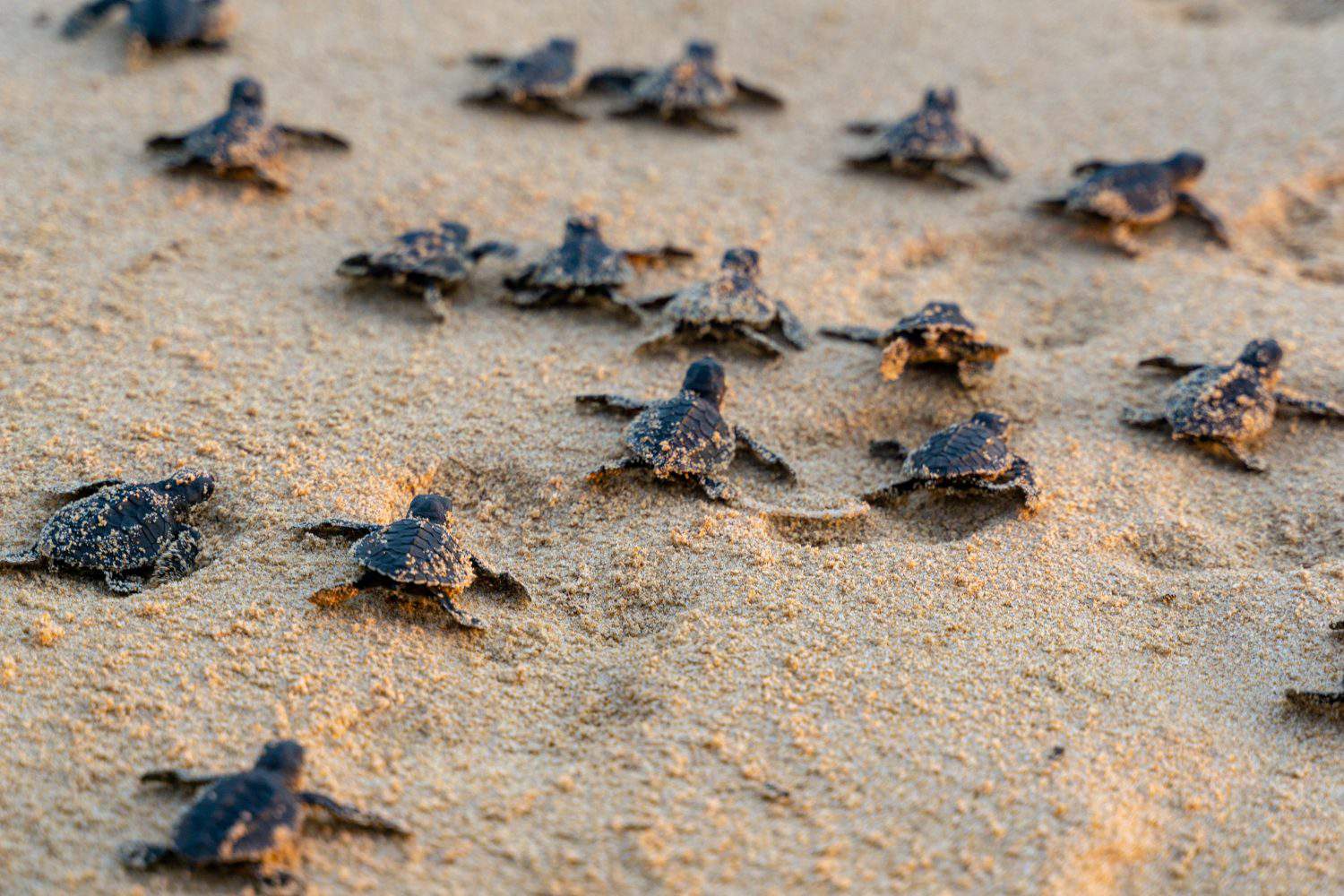
- Location: Malaquite Beach, Padre Island National Seashore, North Padre Island, TX
- Timing: June- August
The natural habitat of the rare and endangered Kemp’s ridley sea turtle ranges down the East Coast and around the Gulf of Mexico. The turtles mate at sea, then the females come ashore and dig nests in the sand where their babies hatch. The newborn must then make their way (slowly) into the water, a stirring sight to see. The National Park Service supervises the hatchling release at Malaquite Beach, and rangers sometimes bring a few turtles close to assembled spectators for a closer look.
Alpenglow

- Location: Chugach Mountains, AK
- Timing: Summer
Merriam-Webster defines alpenglow as “a reddish glow seen near sunset or sunrise on the summits of mountains.” It is caused by indirect sunlight filtering through ice crystals, rain, dust, or other microscopic particles in the air. Alpenglow washing over the Chugach Mountains in southern Alaska creates an especially dramatic.
Bird migration
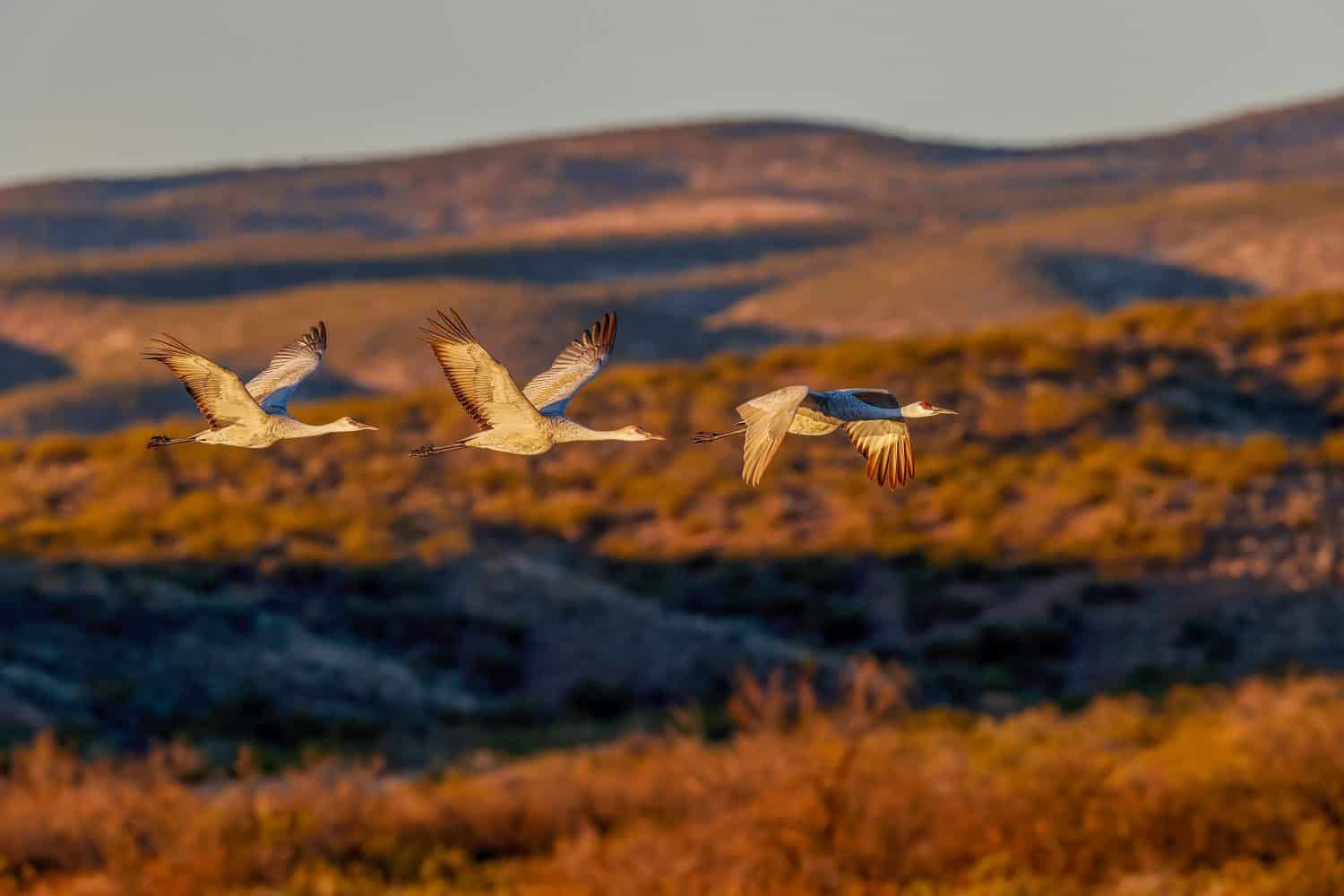
- Location: Bosque del Apache National Wildlife Refuge, San Antonio, NM
- Timing: Spring
Located between the Chupadera and San Pascual mountains and spanning almost 60,000 acres, the Bosque del Apache refuge welcomes tens of thousands of waterfowl — including ducks, geese, and cranes — each winter. As spring approaches, they fly off to other destinations in impressive numbers. Many other kinds of birds, as well as colorful wildflowers, add to the spectacle.
Firefall

- Location: Yosemite National Park, CA
- Timing: Mid-February
A man-made event called Firefall, involving a torrent of burning embers pushed down from the top of Glacier Point, was an attraction at Yosemite from 1872 through 1968. The spectacle ended due to concerns about damage to the park. In 1973, a nature photographer discovered that Horsetail Fall, descending from the famed El Capitan rock formation, looked as if it were on fire when it was hit by rays from the setting sun — and this is Yosemite’s stirring Firefall today.
Bioluminescence

- Location: Mission Bay & Torrey Pines Beach, San Diego, CA
- Timing: June – September
Bioluminescence — the result of a kind of plankton that’s responsible for “red tides” during the day but changes color when moved by the tides as night — bathes beaches and the sea in Mission Bay and surrounding areas in a neon blue light. The effect occurs spontaneously and is hard to predict, but is best seen at the darkest beaches possible.
Meteor shower

- Location: Cherry Springs State Park, Coudersport, PA
- Timing: Fall or winter
Meteor showers, during which as many as a hundred “shooting stars” can sometimes be seen in an hour’s time, may be experienced in many places, but Cherry Springs State Park is one of the best “dark sky” corners of the country for enjoying stargazing of all kinds, and especially the profusion of meteors.
Aurora borealis
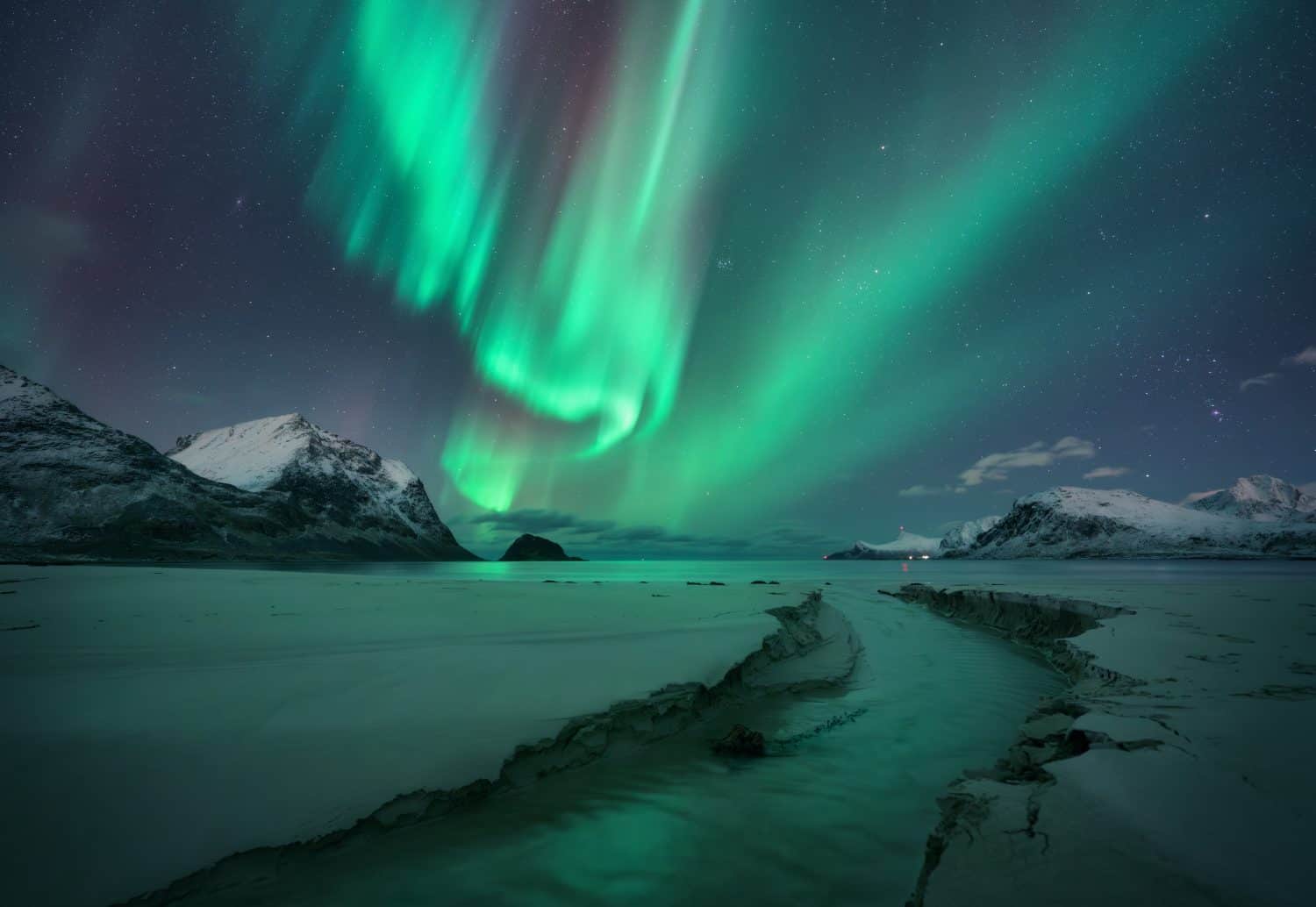
- Location: Fairbanks, AK
- Timing: From August 21 to April 21
The aurora borealis, or northern lights, appear in the upper reaches of the Northern Hemisphere. This stunning display of waves, spirals, ribbons, and flickers in haunting colors of green, white, pink, red, and/or purple is the result of charged solar particles colliding, at speeds up to 45 million miles per hour, with Earth’s upper atmosphere. The traditional “aurora zone” extends about 1,550 miles from the North Pole. Fairbanks is located about 200 miles outside that range, but the aurora has been seen farther and farther south. Due to this, Fairbanks is now considered a prime viewing spot.
Geysers

- Location: Old Faithful, Yellowstone Park, WY
- Timing: Anytime
Geysers are springs that periodically explode into plumes of water and steam after water seeps down to rocks super-heated by volcanic magma. They exist in very few places, but the most famous geyser anywhere is Yellowstone’s Old Faithful, which has been known to propel water almost 200 feet in the air. It is said that about a million eruptions have been recorded since the geyser was observed and named in 1870. It takes its name from the fact that, unlike many geysers, its eruptions can be predicted fairly accurately.
Volcanoes

- Location: Kilauea, HI
- Timing: November – March
Volcanoes are vents or openings in the Earth’s crust through which lava, ash, rocks, and gases are propelled up into the air (or in the case of lava, also spilled down onto the surrounding land). They have caused unimaginable damage and loss of life over the centuries.
Native Hawaiians revere Kilauea on the side of Mauna Loa on the island of Hawaii as the home of Pele, the volcano goddess. There have been hundreds of eruptions over the centuries, and the span between 1983 and 2018 saw almost continuous activity. Its last eruption came in September of last year, but the National Volcano Early Warning System rates its threat potential as “very high.”
Grand Canyon
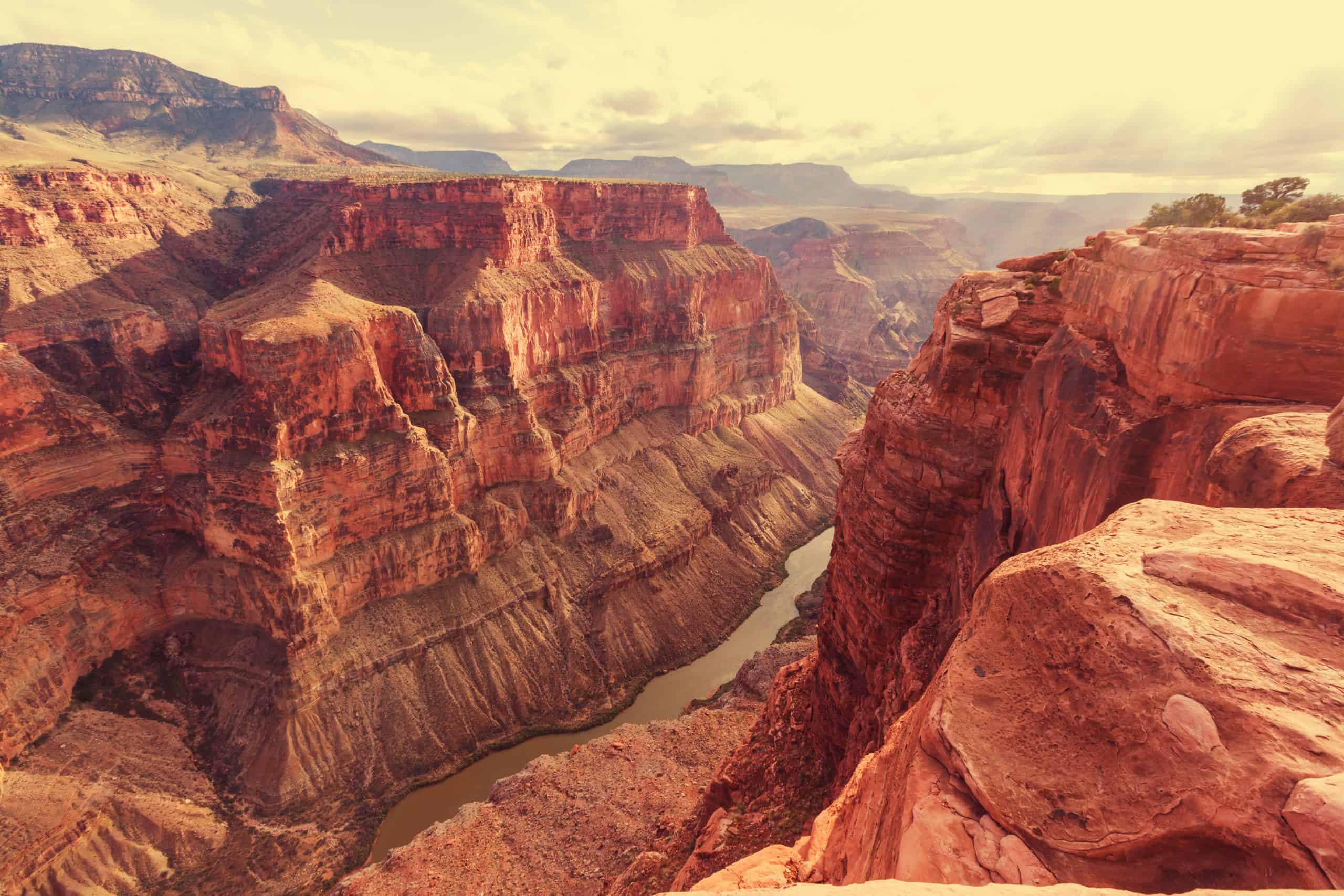
- Location: Grand Canyon National Park, AZ
- Timing: Anytime
Probably America’s single best-known natural phenomenon, the Colorado River carved out this 278-mile long, mile-deep canyon through the ages. It is the defining feature of the ancestral homelands of some 11 Native American tribes. It is also considered an example of one of the world’s most spectacular effects of erosion. The National Park Service offers information on hiking, cycling, rail adventures, mule trips, guided tours, and more for this unforgettable locale — something every American should see at least once. (Next, check out America’s favorite destinations managed by the government.)